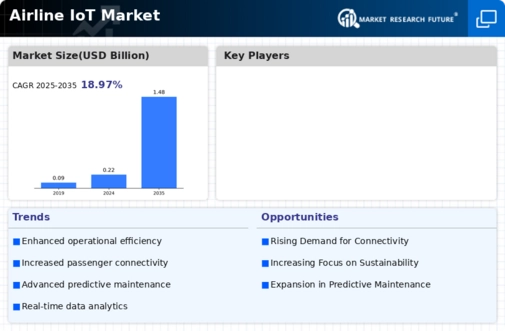-
Executive Summary
-
Market Introduction
-
Market Definition
-
Scope of the Study
-
Market Structure
-
Key Takeaways
-
Key Buying Criteria
-
Research Methodology
-
Research Process
-
Primary Research
-
Secondary Research
-
Market Size Estimation
-
Forecast Model
-
List of Assumptions
-
Limitations
-
Market Landscape
-
Porter’s Five Forces Analysis
- Threat of New Entrants
- Bargaining Power of Buyers
- Threat of Substitutes
- Segment Rivalry
- Bargaining Power of Supplies
-
Value Chain/Supply Chain Analysis
-
Market Dynamics
-
Introduction
-
Market Drivers
-
Market Restraints
-
Market Opportunities
-
Industry Dynamics
-
Technology Trend
-
Regulatory Landscape
-
Patent Analysis Outlook
-
Global Airline IoT Market, by Application
-
Introduction
-
Fleet Management
- Market Estimates & Forecast, 2024–2032
- Market Estimates & Forecast, by Region, 2024–2032
-
Passenger Experience Enhancement
- Market Estimates & Forecast, 2024–2032
- Market Estimates & Forecast, by Region, 2024–2032
-
Other Processes
- Market Estimates & Forecast, 2024–2032
- Market Estimates & Forecast, by Region, 2024–2032
-
Global Airline IoT Market, by Component
-
Introduction
-
IT services
- Market Estimates & Forecast, 2024–2032
- Market Estimates & Forecast, by Region, 2024–2032
-
Software
- Market Estimates & Forecast, 2024–2032
- Market Estimates & Forecast, by Region, 2024–2032
-
Data centre systems
- Market Estimates & Forecast, 2024–2032
- Market Estimates & Forecast, by Region, 2024–2032
-
Communication services
- Market Estimates & Forecast, 2024–2032
- Market Estimates & Forecast, by Region, 2024–2032
-
Devices
- Market Estimates & Forecast, 2024–2032
- Market Estimates & Forecast, by Region, 2024–2032
-
Global Airline IoT Market, by Region
-
Introduction
-
North America
- Market Estimates & Forecast, by Country, 2024–2032
- Market Estimates & Forecast, by Application, 2024–2032
- Market Estimates & Forecast, by Component, 2024–2032
- US
- Canada
-
Europe
- Market Estimates & Forecast, by Country, 2024–2032
- Market Estimates & Forecast, by Application, 2024–2032
- Market Estimates & Forecast, by Component, 2024–2032
- UK
- Germany
- France
- Italy
- Rest of Europe
-
Asia-Pacific
- Market Estimates & Forecast, by Country, 2024–2032
- Market Estimates & Forecast, by Application, 2024–2032
- Market Estimates & Forecast, by Component, 2024–2032
- China
- Japan
- India
- Rest of Asia-Pacific
-
Middle East & Africa
- Market Estimates & Forecast, by Country, 2024–2032
- Market Estimates & Forecast, by Application, 2024–2032
- Market Estimates & Forecast, by Component, 2024–2032
- Saudi Arabia
- UAE
- Rest of Middle East & Africa
-
Latin America
- Market Estimates & Forecast, by Country, 2024–2032
- Market Estimates & Forecast, by Application, 2024–2032
- Market Estimates & Forecast, by Component, 2024–2032
- Brazil
- Mexico
- Rest of Latin America
-
Competitive Landscape
-
Competitive Scenario
-
Competitive Overview
-
Competitive Benchmarking
-
Market Share Analysis
-
Company Profiles
-
Amadeus IT Group SA
- Company Overview
- Product Offering
- Financial Overview
- Key Developments
- Swot Analysis
- Strategy
-
SAP SE
- Company Overview
- Product Offering
- Financial Overview
- Key Developments
- Swot Analysis
- Strategy
-
Cisco Systems, Inc.
- Company Overview
- Product Offering
- Financial Overview
- Key Developments
- Swot Analysis
- Strategy
-
Huawei Technologies Co., Ltd.
- Company Overview
- Product Offering
- Financial Overview
- Key Developments
- Swot Analysis
- Strategy
-
SITA
- Company Overview
- Product Offering
- Financial Overview
- Key Developments
- Swot Analysis
- Strategy
-
IBM Corporation
- Company Overview
- Product Offering
- Financial Overview
- Key Developments
- Swot Analysis
- Strategy
-
Microsoft Corporation
- Company Overview
- Product Offering
- Financial Overview
- Key Developments
- Swot Analysis
- Strategy
-
Oracle Corporation
- Company Overview
- Product Offering
- Financial Overview
- Key Developments
- Swot Analysis
- Strategy
-
Siemens AG
- Company Overview
- Product Offering
- Financial Overview
- Key Developments
- Swot Analysis
- Strategy
-
Sabre Corporation
- Company Overview
- Product Offering
- Financial Overview
- Key Developments
- Swot Analysis
- Strategy
-
-
List of Tables
-
Global Airline IoT Market, by Region, 2024–2032
-
North America: Airline IoT Market, by Country, 2024–2032
-
Europe: Airline IoT Market, by Country, 2024–2032
-
Asia-Pacific: Airline IoT Market, by Country, 2024–2032
-
Middle East & Africa: Airline IoT Market, by Country, 2024–2032
-
Latin America: Airline IoT Market, by Country, 2024–2032
-
Global Airline IoT, Application Market, by Region, 2024–2032
-
North America: Airline IoT, Application Market, by Country, 2024–2032
-
Europe: Airline IoT, Application Market, by Country, 2024–2032
-
Asia-Pacific: Airline IoT, Application Market, by Country, 2024–2032
-
Middle East & Africa: Airline IoT, Application Market, by Country, 2024–2032
-
Latin America: Airline IoT, Application Market, by Country, 2024–2032
-
Global Airline IoT Component Market, by Region, 2024–2032
-
North America: Airline IoT Component Market, by Country, 2024–2032
-
Europe: Airline IoT Component Market, by Country, 2024–2032
-
Asia-Pacific: Airline IoT Component Market, by Country, 2024–2032
-
Middle East & Africa: Airline IoT Component Market, by Country, 2024–2032
-
Latin America: Airline IoT Component Market, by Country, 2024–2032
-
Global Airline IoT Market, by Application, 2024–2032
-
Global Airline IoT Market, by Component, 2024–2032
-
North America: Airline IoT Market, by Country, 2024–2032
-
North America: Airline IoT Market, by Application, 2024–2032
-
North America: Airline IoT Market, by Component, 2024–2032
-
Europe: Airline IoT Market, by Country, 2024–2032
-
Europe: Airline IoT Market, by Application, 2024–2032
-
Europe: Airline IoT Market, by Component, 2024–2032
-
Asia-Pacific: Airline IoT Market, by Country, 2024–2032
-
Asia-Pacific: Airline IoT Market, by Application, 2024–2032
-
Asia-Pacific: Airline IoT Market, by Component, 2024–2032
-
Middle East & Africa: Airline IoT Market, by Country, 2024–2032
-
Middle East & Africa: Airline IoT Market, by Application, 2024–2032
-
Middle East & Africa: Airline IoT Market, by Component, 2024–2032
-
Latin America: Airline IoT Market, by Country, 2024–2032
-
Latin America: Airline IoT Market, by Application, 2024–2032
-
Latin America: Airline IoT Market, by Component, 2024–2032
-
List Of Figures
-
Research Process of MRFR
-
Top-Down & Bottom-Up Approaches
-
Market Dynamics
-
Impact Analysis: Market Drivers
-
Impact Analysis: Market Restraints
-
Porter's Five Forces Analysis
-
Value Chain Analysis
-
Global Airline IoT Market Share, by Application, 2024 (%)
-
Global Airline IoT Market, by Application, 2024–2032 (USD Million)
-
Global Airline IoT Market Share, by Component, 2024 (%)
-
Global Airline IoT Market, by Component, 2024–2032 (USD Million)
-
Global Airline IoT Market Share (%), By Region, 2024
-
Global Airline IoT Market, by Region, 2024–2032 (USD Million)
-
North America: Airline IoT Market Share (%), 2024
-
North America: Airline IoT Market by Country, 2024–2032 (USD Million)
-
Europe: Airline IoT Market Share (%), 2024
-
Europe: Airline IoT Market by Country, 2024–2032 (USD Million)
-
Asia-Pacific: Airline IoT Market Share (%), 2024
-
Asia-Pacific: Airline IoT Market by Country, 2024–2032 (USD Million)
-
Middle East & Africa Airline IoT Market Share (%), 2024
-
Middle East & Africa Airline IoT Market by Country, 2024–2032 (USD Million)
-
Latin America Airline IoT Market Share (%), 2024
-
Latin America Airline IoT Market by Country, 2024–2032 (USD Million)









Leave a Comment